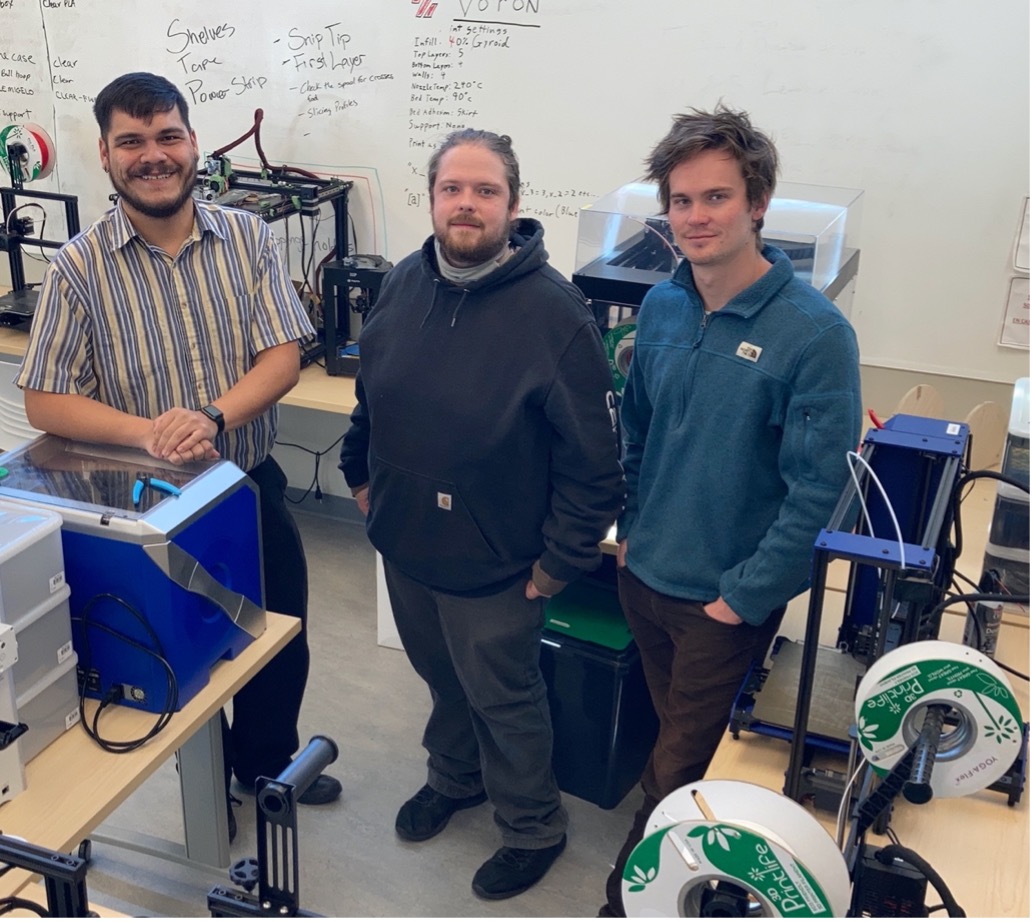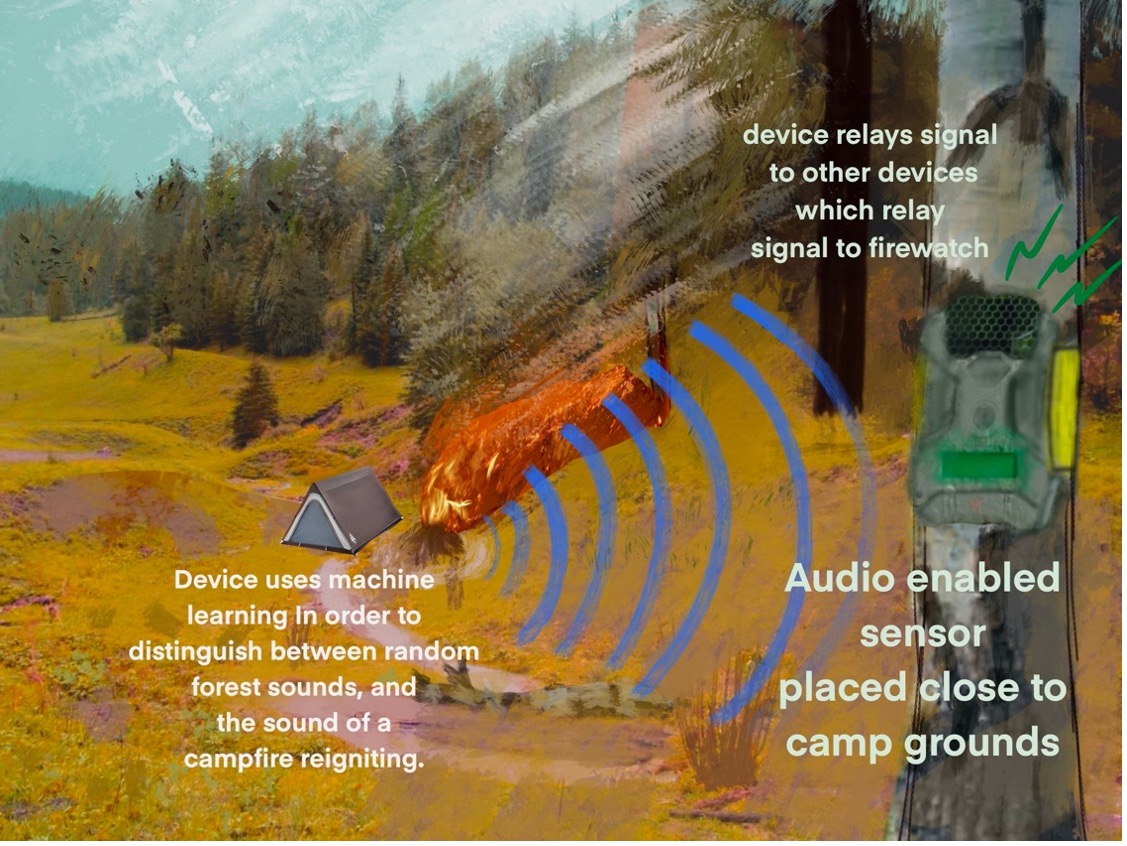Wildfires in the US are becoming more prevalent, with several experts pointing toward climate change as the main reason. Last year in the US, there were 58,985 wildfires that burned over 7.1 million acres. In the last decade, wildfires have destroyed over 82.3 million acres across the nation (that’s roughly the size of Montana and almost 4% of the country’s total size). Moreover, according to the National Interagency Fire Center, during the first two months of 2022, the number of wildfires and acres burned was above the 10-year average. As wildfires intensify, new technology resources can help suppress them or even keep small blazes in check to prevent them from turning into a massive out-of-control wildfire like last year’s fast-moving Dixie fires in California, which consumed 963,309 acres.
To help detect wildfires early on, a team of 3D printing technicians from non-profit education provider New Collar Network have been awarded an international hardware grant for audio innovations from the Knowles Corporation (NYSE: KN), a manufacturer of advanced micro-acoustic microphones and speakers. The winning idea is an audio surveillance-enabled sensor enclosed in a 3D printed case that will use machine learning (ML) to distinguish between random forest sounds and the sound of a fire reigniting to warn authorities of a potential blaze.

Knowles AISonic Hardware Grant winning team from the New Collar Network at the 3D printing lab: Filip Perez, Jed Beddo, and Alec Kerr. Image courtesy of New Collar Network.
Using Knowles’ advanced hardware, the device can identify fire ignition, reignition, and also arcing from power lines to indicate a possible fire risk. Furthermore, any one device can relay a signal to other devices, such as field cameras, to provide immediate wildfire awareness to forest service firefighters.
To demonstrate a proof of concept and prototype of an early wildfire detection system, the team will use the winning prize, Knowles’ AISonic IA8201 Raspberry Pi Development Kit. This all-in-one-package brings voice, audio edge processing, and ML listening capabilities to devices and systems for a range of new applications. Launched in September 2021, the latest development kit bundles all of the hardware, add-on open software, and algorithms required to test, prototype, and debug voice and audio functionality and integration in new applications for smart home, consumer technology, industrial, and beyond.
Knowles designed this new kit to be the simplest and fastest way for product designers to prototype new innovations to address emerging use cases, including contextually aware voice, ML listening, and real-time audio processing that requires flexible development tools to accelerate the design process minimize development costs, and leverage new technological advances.
Since Knowles development kit has a small footprint, the team said it could be easily turned into a product to guard against wildfires. Moreover, they decided to 3D print a case for the device with a strap to make it easy to attach to a tree trunk. Alternatively, they could 3D print other cases, like one with a magnet that would be useful on metal surfaces. Finally, as an add-on, the team hopes to make the “always-on sensor units of the IA8201” solar-powered.

Rendering of the New Collar Network’s early wildfire detection sensor. Image courtesy of New Collar Network.
The team comprises Filip Perez, Jed Beddo, and Alec Kerr. All three are currently registered at the US Department of Labor and are working at a 3D printing apprenticeship program for New Collar Network’s sister company, Fab Lab Hub, a member of America Makes and hands-on training center in digital fabrication skills. According to the trio, the aim is to have a small product footprint to maintain “the nature of a beautiful forest but still noticeable for forestry personnel to service the product.”
“We would initially start with emergency personnel or park rangers to prove how well the product and hardware would fare in outdoor conditions. Eventually, there would be a civilian version for people who live in arid fire-prone regions; and a camp version for campers to always know where the nearest wildfire is in relation to their site, to give advanced warning, or to even monitor the campsite,” disclosed the winners.
Early detection projects like this could save more acres of forest land and give greater opportunity for safer exiting of communities as well as decrease firefighter response times with more accurate location details. Moreover, as more people choose careers in 3D printing and are encouraged by non-profits to learn the trade, much more initiatives will become available sooner, moving quicker from prototype to production.
New Collar Network’s team is one of five winners of the Knowles International AI Sonic Hardware Grant for Audio Innovations. Out of the considerable number of high-quality submissions worldwide, the judges chose a handful of innovative projects, like a group from Malawi that wants to build low-cost small wind turbines using locally available materials or a Spanish team that hopes to solve sleep apneas.
Subscribe to Our Email Newsletter
Stay up-to-date on all the latest news from the 3D printing industry and receive information and offers from third party vendors.
You May Also Like
Profiling a Construction 3D Printing Pioneer: US Army Corps of Engineers’ Megan Kreiger
The world of construction 3D printing is still so new that the true experts can probably be counted on two hands. Among them is Megan Kreiger, Portfolio Manager of Additive...
US Army Corps of Engineers Taps Lincoln Electric & Eaton for Largest 3D Printed US Civil Works Part
The Soo Locks sit on the US-Canadian border, enabling maritime travel between Lake Superior and Lake Huron, from which ships can reach the rest of the Great Lakes. Crafts carrying...
Construction 3D Printing CEO Reflects on Being Female in Construction
Natalie Wadley, CEO of ChangeMaker3D, could hear the words of her daughter sitting next to her resounding in her head. “Mum, MUM, you’ve won!” Wadley had just won the prestigious...
1Print to Commercialize 3D Printed Coastal Resilience Solutions
1Print, a company that specializes in deploying additive construction (AC) for infrastructure projects, has entered an agreement with the University of Miami (UM) to accelerate commercialization of the SEAHIVE shoreline...





























